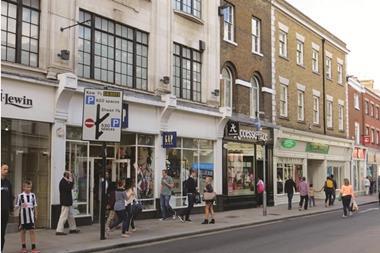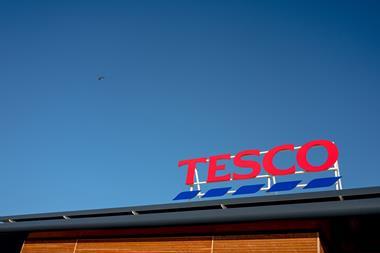High street advocate and campaigner Bill Grimsey has made new recommendations on how to revive town centres through a focus on localisation and new purpose.
Grimsey, a former director of retailers including Tesco and Wickes, believes that if the right action is taken then “out of the ashes and pandemic rubble will eventually emerge signs of recovery in every town up and down the country”.
Here we highlight some of his proposals in his updated review, Build Back Better, focusing on social and economic measures rather than technology, which was at the forefront of his previous reviews.
Grimsey’s ideas come under three main umbrellas: localism, effective leadership and a shift away from cars.
He argues for “a massive shift in power away from central government to local communities and a renewed focus on localism” and maintains: “Local people must be empowered to redesign their own high streets and have a say on the businesses, services and amenities that occupy [them], with increased CPO [compulsory purchase order] powers if necessary.”
That means there is a need for “local leaders valued and recognised in the same way that powerful mayors are viewed in other countries”, and that an objective should be “fewer streets and a huge expansion of green space, parks and town squares”.
He provides examples of places where he believes good work is being done, such as Stockton-on-Tees in the northeast of England.
Specific measures Grimsey proposes include:
- The introduction of community right-to-buy laws, following the example of the Scottish government, “to ensure unused or neglected properties are forced back onto the market, and can be bought by community trusts or local authorities”.
- Involving young people in the design of high streets through “participation rights in the planning process”, as has been done in Norway.
- Local authorities should “invest in property as a low-cost platform for local benefit – to house activities that support meaningful work, local trade, wellbeing, belonging and so on, rather than to maximise commercial return”.
- Scrapping business rates and introducing a 2% sales tax “that will raise the same amount as before and level the playing field between online and offline retailers”.
- The implementation of recommendations in the government-commissioned Digital High Street 2020 report, “particularly the need to eliminate the current gap in digital skills in communities”.
- Encouraging “all stakeholders to be engaged with commercial property leases with rents being linked to the success of the occupying business”.
- Reform of the “archaic retail rental structure” through the assembly of “an expert group of senior surveyors and leading retailers to devise a new formula for a ‘fair rent’ for retail premises”.
- Deregulation of the property use class system and empowerment of local authorities “to develop an appropriate proposition to attract people to live, work, play and visit a unique town”.
- Use of CPOs and other powers to enable “an interventionist drive to tackle empty buildings”. Grimsey maintains: “There should be serious consideration of relocating public assets to the town centre and for the high street becoming an enterprise zone.”
- Recognition “that towns and cities must no longer be designed around the car” and “a major shift in planning and design to reflect this”. The ‘20-minute neighbourhood’ should be made “a central principle of the planning system in order to encourage people to travel less, buy locally and be able to get all the services they need within a short walk”.
- The creation of “a pedestrianisation task force to immediately make significant parts of town centres car-free, allow restaurants and bars to trade and meet social distance rules, and discourage unsustainable habits”, along with the creation of new green space.
You can access the full report here.
How do you think town centres could best be reformed to create attractive environments for businesses and consumers? Let us know by commenting on this article below.


























No comments yet